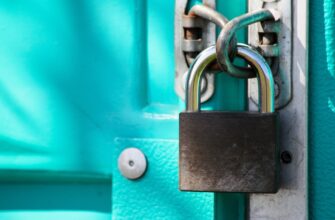- Introduction: The Critical Need for Affordable Security
- What Is Air-Gapping? The Ultimate Digital Quarantine
- Why Air-Gapping Is Non-Negotiable for Fund Protection
- Low-Cost Air-Gapped Strategies: Secure Funds on a Budget
- Implementing Your Air-Gapped System: Step-by-Step
- FAQ: Air-Gapped Fund Security Demystified
- Conclusion: Unbeatable Security Without High Costs
Introduction: The Critical Need for Affordable Security
In today’s digital landscape, protecting financial assets demands robust solutions that don’t break the bank. Air-gapping—isolating sensitive systems from networks—emerges as a powerful yet surprisingly low-cost strategy to shield funds from hackers, malware, and remote exploits. This guide explores practical, budget-friendly air-gapped techniques to secure your assets without compromising on impenetrable security.
What Is Air-Gapping? The Ultimate Digital Quarantine
Air-gapping physically separates devices or systems from unsecured networks like the internet. By creating an “air gap,” it blocks remote cyberattacks, ensuring critical operations (like signing transactions or storing keys) occur offline. For fund security, this means private keys never touch internet-connected devices, eliminating exposure to online threats.
Why Air-Gapping Is Non-Negotiable for Fund Protection
Cybercriminals constantly evolve tactics to steal digital assets. Air-gapping counters these threats by:
- Neutralizing Remote Hacks: Prevents phishing, malware, and ransomware from reaching isolated systems.
- Eliminating Network Vulnerabilities: No internet connection means no attack surface for exploits.
- Ensuring Physical Control: Access requires direct interaction, adding a layer of accountability.
Unlike expensive enterprise solutions, air-gapping leverages existing resources for enterprise-grade security at minimal cost.
Low-Cost Air-Gapped Strategies: Secure Funds on a Budget
Implement these affordable methods to create your fortress:
- Repurpose Old Devices: Use a retired smartphone or tablet as a dedicated air-gapped wallet. Wipe it, install a crypto wallet app, and never reconnect to Wi-Fi or cellular networks. Cost: $0 (using existing hardware).
- Paper Wallets: Generate keys offline via tools like BitAddress, print them, and store copies in secure physical locations. Destroy digital traces afterward. Cost: Minimal (paper/ink).
- Budget Hardware Wallets: Opt for entry-level devices like Ledger Nano S or Trezor One ($50–$70). They sign transactions offline via USB, balancing convenience and security.
- Offline Computer Setup: Dedicate an old laptop with a clean OS install. Use it solely for wallet management, disconnected from all networks. Cost: Repurposed hardware + USB drive for data transfer.
- DIY Raspberry Pi Solution: Build a custom air-gapped device using a Raspberry Pi ($35–$75). Install lightweight Linux and wallet software, disabling all network interfaces permanently.
Implementing Your Air-Gapped System: Step-by-Step
Follow this workflow for foolproof execution:
- Choose Your Method: Select a strategy matching your technical comfort and budget.
- Prepare the Device: Factory-reset hardware; install only essential software.
- Generate Keys Offline: Create wallets/keys while disconnected from networks.
- Establish Secure Transfer: Use USB drives or QR codes to move unsigned transactions to the air-gapped device and signed ones back.
- Store Backups Physically: Keep encrypted paper wallets or hardware in fireproof safes or bank vaults.
- Maintain Discipline: Never connect the device to networks; audit security biannually.
FAQ: Air-Gapped Fund Security Demystified
Q: What’s the cheapest air-gapped solution?
A: Paper wallets are free but require meticulous handling. Repurposing old devices is nearly cost-free.
Q: Are budget hardware wallets truly secure?
A: Yes—models like Ledger Nano S use secure elements and air-gapped signing. Ensure firmware updates occur via trusted computers.
Q: Can I use a regular laptop for air-gapping?
A> Absolutely. Disable Wi-Fi/Bluetooth, remove Ethernet access, and never reconnect. Dedicate it solely to fund management.
Q: How do I transfer data safely to an air-gapped device?
A> Use USB drives scanned for malware beforehand, or QR codes displayed on a separate screen. Avoid direct cable links to online devices.
Q: Is air-gapping viable for large funds?
A> Yes—it’s ideal for high-value holdings. Combine with multisig wallets for enhanced security layers.
Conclusion: Unbeatable Security Without High Costs
Air-gapping transforms everyday hardware into vault-like defenses, proving top-tier fund protection doesn’t require massive investment. By adopting these low-cost strategies—from paper wallets to repurposed devices—you create an insurmountable barrier against digital threats. Start small, stay disciplined, and turn your existing resources into an impenetrable financial shield today.








